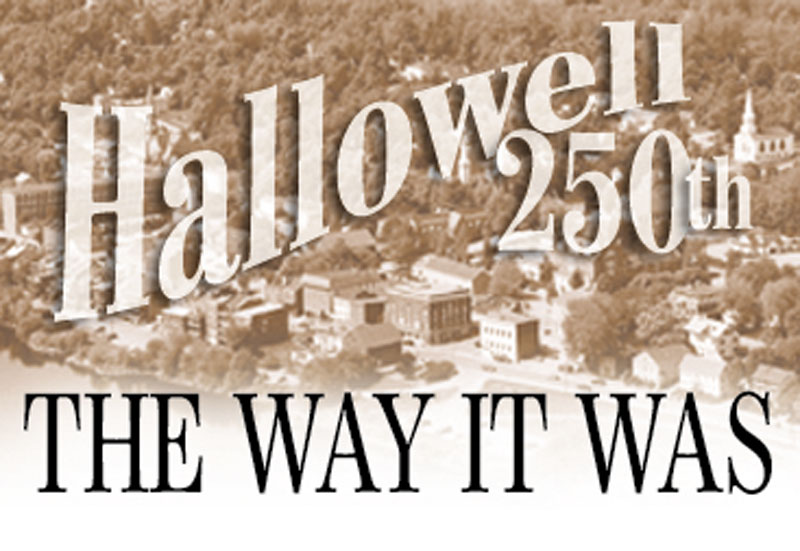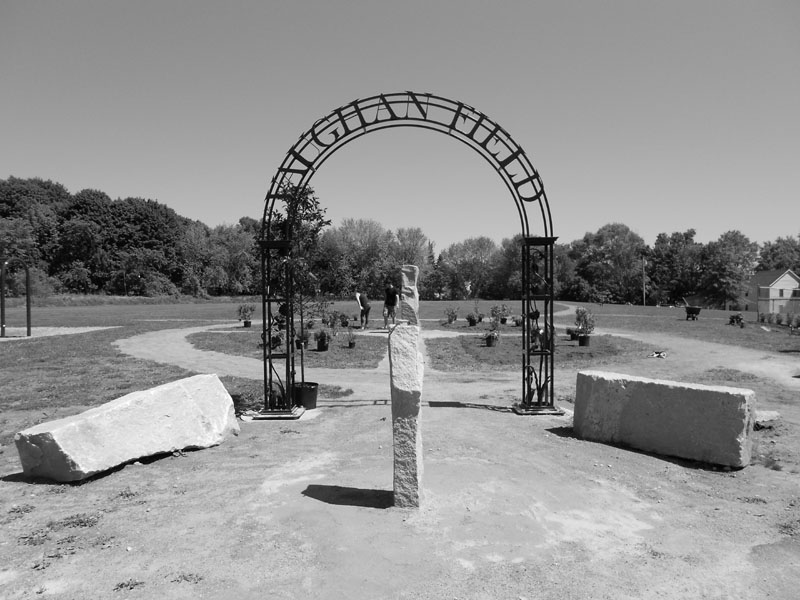Hallowell has a long and colorful history and part of that history is an active and involved citizenry.
Two recent events come to mind: the march on the capital in 1975 when the state Department of Transportation had plans to demolish parts of downtown to make way for a four-lane highway, and the grassroots mobilization of citizens to restore Vaughan Field as Hallowell’s park.
This is the story of Vaughan Field, but first a little history.
In the last half of the 1800s the property was the site of the Sampson Oil Cloth Factory. The factory burned after the turn of the century and Sampson later decided to sell the property.
Bertha Vaughan purchased the property as a memorial to her parents and deeded the nine acres to the city of Hallowell, stipulating that it be maintained as “a park and playground, to which all the children and citizens of Hallowell may have access.”
For several decades the community enjoyed using Vaughan Field, which became known as the ball field, and where generations played football and baseball. The field was also the site of Easter egg hunts, parade staging, firemen’s musters and many other activities.
Indeed, it was Hallowell’s park. A picture of Bertha’s vision for the park hangs in Hallowell City Hall. In 1952, the voters narrowly decided to approve the use of Vaughan Field as the site for an elementary school. The Vaughan heirs, at the request of the city, released to the city any ownership claims they might have had to the property. The city then entered into a lease contract with the Maine State School Building Authority and school officials to build the new school.
When the state approved a new elementary school for Hall-Dale in 2004, the school board decided to build it at a new location, leaving the city and school officials to make plans for the disposition of the land. Initially, the city wanted to sell the property to a developer and use the revenue to offset the cost of expansions to the school’s gym and library that the state wouldn’t cover.
Once the plan became public, a group of citizens organized to honor Bertha Vaughan’s gift and restore the property to its original intent as a park and playground for all Hallowell citizens. That group became the Friends of Vaughan Field.
A grassroots movement is the epitome of citizens involvement; this one truly spread like wildfire throughout Hallowell and gathered support from folks in other towns and cities. It began with a few neighbors of the parcel of land that were keenly interested in what would become of the eight-acre mix of open space and woods. Some folks in the neighborhood were in touch with city officials to stay abreast of any plans that may have been brewing and, as it turned out, there were some plans. The plan to sell the land to a developer to build condos and use the money towards the new school was not a desirable outcome for the neighbors and they decided to get organized, better informed and active.
The tipping point was the discovery of a file at city hall that contained a deed gifting the land to the city in 1923, stating it would be maintained as a park and playground for Hallowell citizens — in perpetuity. These words were to become the foundationof the debate between some city officials and the Friends of Vaughan Field.
It quickly became apparent the city didn’t share that view of the deed language and the group set about to change that view. Members began by talking to other folks and asking if they thought Hallowell should have an in-town park, and the response was a resounding yes. A petition signed by hundreds confirmed it was not just a neighborhood group but a growing majority that wanted to move in that direction. The city continued to resist the pressure.
In April 2005, the Friends went to the city council to discuss its findings, such as the deed, and to ask the city to keep the land and use it as a park. A lively debate ensued and a public hearing was called. More than 160 people attended and of those only four people spoke against having a park.
The truly overwhelming turnout still wasn’t enough to sway the opposing point of view, but a few councilors had joined with the Friends.
As the group grew in size, so did its approach to swaying public opinion. If knowledge is power, then more information is what was needed. Fundraisers were held to finance a study by a noted land use consultant, lawyers were consulted to confirm the deed was valid and more and more meetings were attended by more and more people.
The train was rolling and it would not be stopped.
With massive growing movement for the park continuing, the Friends realized it was time to focus on running a candidate for the council. The park was a hot-button issue that brought out the voters and culminated with the Friends candidate winning a seat.
Now the Friends could work from inside and outside the government. This was key. At last, the Friends had the fourth vote needed to create the park. This could have been sufficient but the group wanted a unanimous vote. The group was, if nothing else, relentless in pursuit of its goal.
A new mayor appointed the Vaughan Field committee to study uses for the land. It recommended the land be used as a park. After one more packed public hearing in 2007, the council voted unanimously to tear down the old school and restore Vaughan Field as Hallowell’s park.
This tale exemplifies how an active and engaged citizenry can work through processes to effect real change where they live. People of all ages are using the park on a daily basis, from the playground to the open field and walking trail. It’s easy to now see: it was the right thing to do.
Hallowell has always had many involved folks doing much good throughout the city and we are proud to call it home.
Send questions/comments to the editors.




Success. Please wait for the page to reload. If the page does not reload within 5 seconds, please refresh the page.
Enter your email and password to access comments.
Hi, to comment on stories you must . This profile is in addition to your subscription and website login.
Already have a commenting profile? .
Invalid username/password.
Please check your email to confirm and complete your registration.
Only subscribers are eligible to post comments. Please subscribe or login first for digital access. Here’s why.
Use the form below to reset your password. When you've submitted your account email, we will send an email with a reset code.